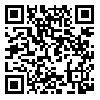Volume 1, Issue 1 (2-2017)
EBHPME 2017, 1(1): 9-17 |
Back to browse issues page
Download citation:
BibTeX | RIS | EndNote | Medlars | ProCite | Reference Manager | RefWorks
Send citation to:



BibTeX | RIS | EndNote | Medlars | ProCite | Reference Manager | RefWorks
Send citation to:
Nosratabadi M, Amini Rarani M, Sharifian Sani M, Vameghi M. Poverty Trends in Health and Nutrition Expenditures in Tehran Housholds during 1984 -2014: A Cohort Approach. EBHPME 2017; 1 (1) :9-17
URL: http://jebhpme.ssu.ac.ir/article-1-34-en.html
URL: http://jebhpme.ssu.ac.ir/article-1-34-en.html
Department of Social Welfare Management, University of Social Welfare and Rehabilitation Sciences, Teharan, Iran
Abstract: (4067 Views)
Background: Health and nutrition are important aspects in the analysis of households’ multidimensional poverty. The present research investigated poverty in Tehran’s households through a cohort approach. In this regard, households’ financial participation about health costs and food intake calories were analyzed.
Methods: Households’ data of costs – income survey were then collected. Health and nutrition poverty trend was investigated through generational approach, index of poverty "Foster, Greer, Turbak", and in the period of 1984-2014 by dividing Tehrany families into eight various age groups. Excell and Stata11 were applied to process and calculate the indices.
Results: During the study years, the highest level of health poverty (29%) in 1999 was in age range of 21-26 and the highest level of nutrition poverty in 1984 (65%) was in age range of 42-46. There has been an ascending trend of health and nutrition poverty at the end of the Fourth Development Plan (2009) up to 2013 for all age groups.
Conclusion: Generally, rate and severity of health and nutrition poverty had many fluctuations among different age groups of Tehrani households’ heads. This rate has raised during recent years which indicates lack of stable and coherent social policies to reduce households’ exposures with catastrophic health care costs and funding of the food aid needs.
Methods: Households’ data of costs – income survey were then collected. Health and nutrition poverty trend was investigated through generational approach, index of poverty "Foster, Greer, Turbak", and in the period of 1984-2014 by dividing Tehrany families into eight various age groups. Excell and Stata11 were applied to process and calculate the indices.
Results: During the study years, the highest level of health poverty (29%) in 1999 was in age range of 21-26 and the highest level of nutrition poverty in 1984 (65%) was in age range of 42-46. There has been an ascending trend of health and nutrition poverty at the end of the Fourth Development Plan (2009) up to 2013 for all age groups.
Conclusion: Generally, rate and severity of health and nutrition poverty had many fluctuations among different age groups of Tehrani households’ heads. This rate has raised during recent years which indicates lack of stable and coherent social policies to reduce households’ exposures with catastrophic health care costs and funding of the food aid needs.
Type of Study: Original article |
Subject:
Special
Received: 2016/10/11 | Accepted: 2017/02/28 | Published: 2018/05/19
Received: 2016/10/11 | Accepted: 2017/02/28 | Published: 2018/05/19
| Rights and permissions | |
 |
This work is licensed under a Creative Commons Attribution-NonCommercial 4.0 International License. |





